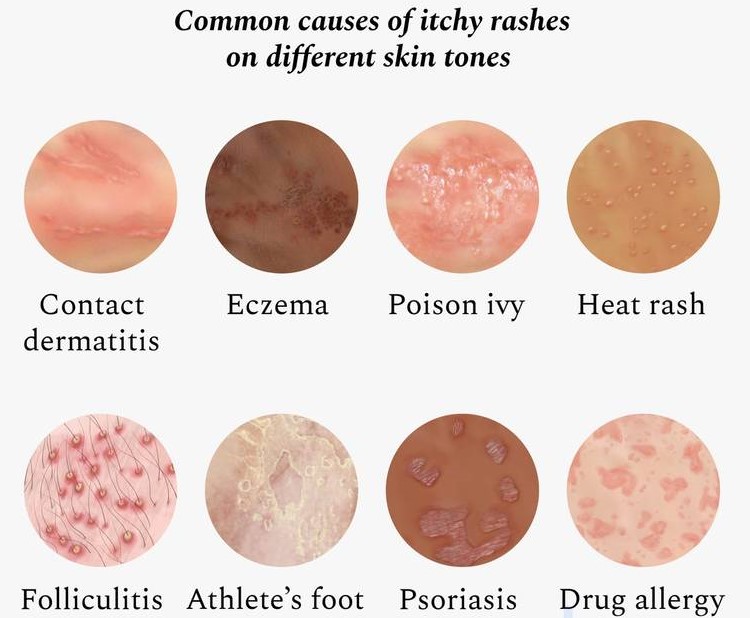Dermatologists possess specialized expertise in identifying and distinguishing between various types of rashes, employing a systematic approach that combines clinical assessment, patient history, and sometimes diagnostic tests.
Here’s how dermatologists differentiate between different types of rashes:
- Clinical Examination: Dermatologists begin by visually examining the rash. They observe its location, distribution, size, shape, and color. These characteristics provide initial clues about the type of rash.
- Patient History: Gathering a thorough medical history is crucial. Dermatologists ask about the onset of the rash, any recent exposures (such as new medications, allergens, or environmental factors), associated symptoms (itching, pain, fever), and any relevant past medical conditions or family history of skin disorders. This information helps narrow down potential causes.
- Classification: Rashes can be broadly classified into categories such as infectious (caused by bacteria, viruses, fungi), inflammatory (resulting from immune responses), allergic (triggered by allergens), or systemic (indicative of underlying systemic conditions). Dermatologists use their knowledge of these categories to guide their differential diagnosis.
- Specific Features: Certain rashes have distinct features that aid in their identification. For example:
- Vesicular Rash: Characterized by small fluid-filled blisters (e.g., in herpes simplex virus infection).
- Papulosquamous Rash: Presents with raised bumps and scaling (e.g., in psoriasis).
- Eczematous Rash: Typically appears red, scaly, and intensely itchy (e.g., in atopic dermatitis).
- Targetoid Rash: Shows concentric rings of color (e.g., in erythema multiforme).
5. Diagnostic Tests: In some cases, dermatologists may need to perform additional tests to confirm their diagnosis. These tests may include:
- Skin Biopsy: Removing a small sample of affected skin for microscopic examination.
- Patch Testing: Applying small amounts of potential allergens to the skin to identify allergic contact dermatitis.
- Microscopic Examination: Looking for specific organisms (e.g., fungi) under a microscope.
6. Pattern Recognition: Experienced dermatologists often rely on pattern recognition built through years of practice and exposure to diverse cases. They may recognize characteristic patterns associated with certain rashes that aid in rapid diagnosis.
7. Consultation: In complex cases or when unsure, dermatologists may consult with colleagues or specialists in related fields (e.g., infectious disease specialists, rheumatologists) to reach a conclusive diagnosis.
8. Treatment Response: Response to initial treatment can also provide diagnostic clues. If a rash improves with a specific therapy (e.g., antifungal cream), it supports the suspected diagnosis.
In conclusion, dermatologists utilize a multifaceted approach involving clinical examination, patient history, classification systems, specific features, diagnostic tests, pattern recognition, and sometimes collaboration with other specialists to accurately differentiate between different types of rashes. This comprehensive approach ensures appropriate treatment and management tailored to each patient’s specific dermatologic condition.





Comments